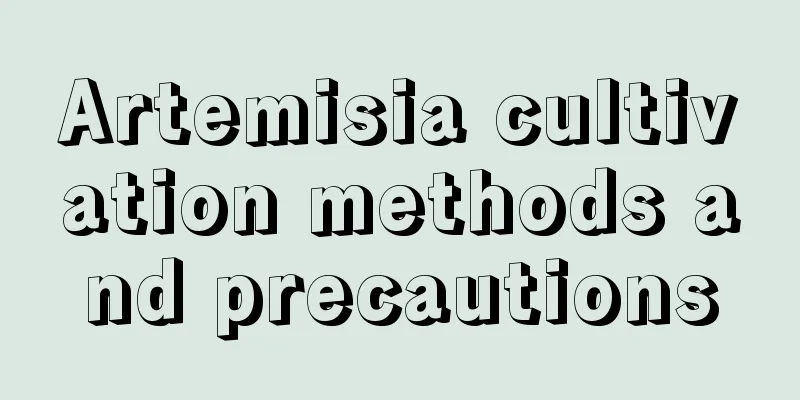Artemisia cultivation methods and precautions

1. Maintenance methods1. Soil: Because it likes fertile soil, you can prepare the soil according to its growth habits: the breeding soil can still be a mixture of humus and soil. Before planting, you need to spread a layer of fine sand on the bottom of the pot, which can promote root absorption. In addition, you also need to mix the soil with decomposed fertilizer, which can promote root development. 2. Watering: Improper watering can cause root rot, so be sure to pay attention to the amount of water used when watering it. Just water the soil thoroughly each time. Observe the condition of the soil before watering each time. Watering is only needed when the soil is completely moist. When the soil turns white, it needs to be watered thoroughly at one time. 3. Fertilization: In addition to the base fertilizer applied to the soil before planting, it is also necessary to apply topdressing during the growing period. The plant consumes more fertilizer during the growing period, and the nutrients in the soil alone are not enough. It needs to be fed with decomposed farmyard manure once a month, and the fertilizer must be diluted before use. 4. Light: If the plants are maintained in a place with sufficient light, they will grow better than those maintained in a dark place. This shows that the growth of mugwort cannot be separated from sunlight. It needs shade in the summer because too strong light will affect its growth. Except for summer, it can receive normal light in other seasons. 2. Breeding techniques1. Reproduction: The methods of reproduction include sowing and division, but the success rate of sowing is low, so it is not recommended. The best time for propagation by division is in March and April each year. When the young stems grow to 15 to 20 centimeters, dig out the whole plant, and then plant the plants separately in new soil. 2. Weeding: After the spring, the young shoots of Artemisia argyi have just sprouted out of the ground, and they need to be sprayed with herbicides. After the seedlings grow up, manual weeding will be needed again. 3. Problem Diagnosis1. Pests: March is the peak period for cutworms, which lurk in the soil and feed on the young stems of plants. You can use black light to lure and catch insects. 2. The branches and leaves turn yellow and dry: If the leaves on the lower half of the plant turn yellow and dry, it is likely that the plant has root rot and needs to be treated by spraying with a mixture of carbendazim or mancozeb. IV. Other issues1. Edibility: It cannot be eaten directly, but it can be processed into food for consumption. 2. Is it suitable for home cultivation: It is not suitable for home cultivation, firstly because the plant is too tall; secondly because it emits a special smell, so it is not suitable for home cultivation. |
<<: Cultivation and reproduction methods of mirror grass
>>: Guava cultivation methods and precautions
Recommend
The leaves of the green radish are as big as 10 palms. Look how people grow them!
1. How to grow green radish? 1. Fertile soil: It ...
The hydroponic method of Dieffenbachia
Ecological habits of Dieffenbachia Dieffenbachia ...
What does the announcement of the 2021 Nobel Prize in Chemistry have to do with ordinary people?
On the afternoon of the 6th, Beijing time, the 20...
Cultivation methods and precautions of bottle coconut
How to cultivate bottle coconut Temperature and l...
How long can a longan potted plant live?
1. How long can you live? It has strong vitality,...
What to do if the leaves of spiderwort wilt
The reason why the leaves of spiderwort wilt is l...
How to sow coleus seeds
Basic information on coleus sowing Coleus can be ...
Cultivation methods and precautions of short-leaf tiger tail orchid How to cultivate short-leaf tiger tail orchid
The short-leaf tiger tail orchid is relatively ea...
Mushroom growth environment and local conditions
Mushroom Growth Environment and Conditions Mushro...
Is potted iris easy to grow? How to care for it?
1. Is it easy to raise? Iris is a relatively easy...
Do sunflowers like water? Do sunflowers like sunlight?
1. Do you like water? It is drought-resistant, bu...
What to do if Tia grows too tall
1. Reasons for Tia's elongation Tia has a rel...
How to grow daisies in pots
step Stage 1: Plug seedling cultivation Germinati...
When does Mirabilis jalapa bloom?
When does it bloom? Mirabilis jalapa, also known ...
How to grow potted Impatiens, what size pot should I use?
1. Cultivation method of potted Impatiens 1. Ligh...









